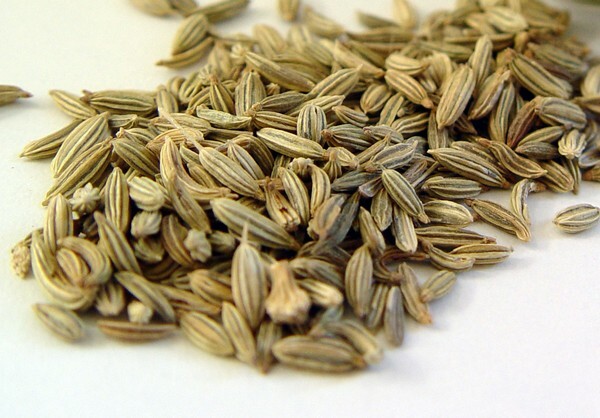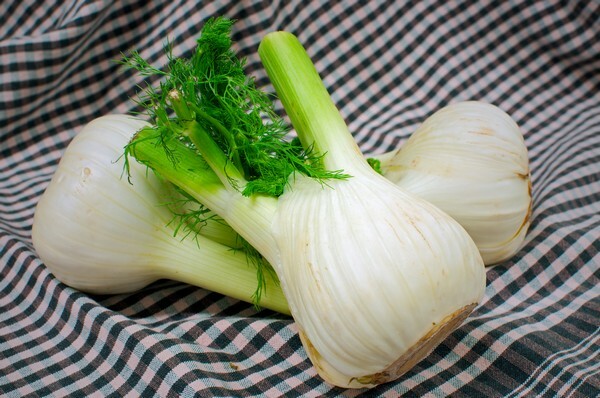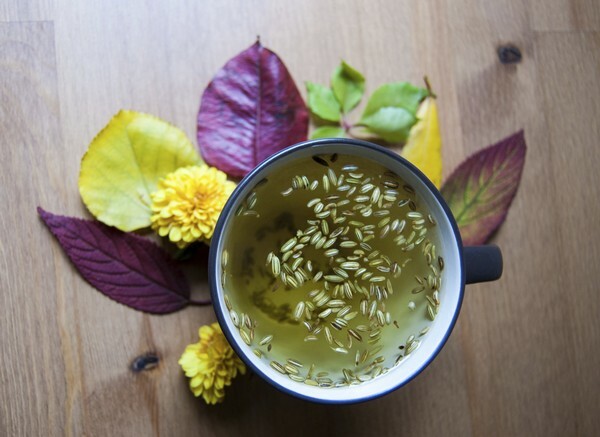Contents:
- Characteristics of the medicinal culture
- Application in cooking
- Composition and properties of the medicinal plant
- Useful properties and contraindications
- Usage in official and traditional medicine
Fennel differs with a light sweetish aroma and gentle spicy taste. Culinary specialists prepare from the vegetable culture vitamin salads, spice up the second dishes with seeds. But not only gourmets appreciate fennel - it is widely used in official and traditional medicine. Due to the unique balanced composition of fruits with anise smell, the plant is used in the treatment of diseases of the gastrointestinal tract and the cardiovascular system. Decoctions and infusions improve vision, eliminate painful colic in newborns, increase the body's resistance to viral and bacterial infections. But do not forget about the belonging of fennel to medicinal plants, so before using it, consult a doctor.
Characteristics of the
drug culture Many people know what fennel is and how it looks, but not everyone could see the beds with fragrant greens. The fact is that this two-year or perennial plant is usually cultivated in the southern latitudes: in the Krasnodar Territory, Crimea, Japan, Central Asia. Only when grown in heavy fertile soils, fennel accumulates a significant amount of nutrients and biologically active substances.
It's interesting: from the seeds of fennel on an industrial scale get a fragrant essential oil, similar to anise. Producers add it to toothpastes, cosmetics, sweets, pastries and even raw sausages.
Medicinal culture is part of the Umbrella family, the most famous of which are also dill and anise. For fennel is characterized by the presence of such species attributes:
- spindle-shaped, fleshy and wrinkled root, branched at the top;
- bluish-blue bloom on the whole plant;
- straight, round and thin-finned stem, reaching a height of 2 m at good care;
- five-membered leaves with ovate-triangular shape, the lower of which are located on the petioles;
- oblong small fruit with a specific sweetish taste and a subtle anise flavor.
When planting in the middle of spring, the medicinal and vegetable culture blooms in the summer, and the seeds are finally formed only in September-October. They are very similar to the external fruits of common garden fennel, which is clearly seen in this fennel photo:

. Application in cooking
High palatability of stems, bulbs, fruits and herbs are widely used in cooking. From them prepare marinades, the first and second dishes, including various side dishes. Without fennel it is impossible to imagine Mediterranean and Oriental cuisine. This is one of those rare plants, all parts of which are used in cooking:
- spicy greens are seasoned with soups and salads, it is put in home preservation, used to decorate ready meals;
- juicy fleshy roots of fennel pickled, boiled, stew as an independent dish or together with other vegetables;
- crispy fennel stem together with cirrus leaves is used for refreshing salads, suitable as a garnish for fatty meat and fish.
But the most popular part of a useful plant is the fruit. Fennel is a seasoning that improves the taste of baked goods, soups, roasts and marinades. On the seeds of vegetable culture, vegetable oils are insisted for their aromatization. Particularly useful fennel in its fresh form as a source of vitamins and trace elements.

Composition and properties of medicinal plants
The wide use of fennel in the therapy of various diseases is based on its combined composition. It contains so much biologically active compounds that the plant can be used as a vitamin remedy to improve immunity and improve the overall health of adults and children. The chemical composition of fennel also provides its therapeutic effects:
- Potassium is a necessary microelement for the active functioning of the cardiovascular system. Deficiency of this chemical can provoke high blood pressure, cause strokes and heart attacks;
- Beta-carotene is metabolized in the body to vitamin A. This compound is necessary for cell growth and division. One of the most useful properties of fennel is an increase in visual acuity, it provides exactly the high content of vitamin A;
- Vitamin E has an antioxidant effect, prevents the negative effects of free radicals. Biologically active substance is often used as a preventive agent to prevent premature aging of tissues;
- Group B vitamins improve metabolism, eliminate disturbances in the central and autonomic nervous system, normalize sleep, reduce excess loads on the heart and blood vessels.
The content of ascorbic acid in fennel is twice as high as in citrus fruits. The daily requirement of an organism in vitamin C will provide the consumption of 100 g of spicy greens or a juicy raw onion. Doctors and traditional healers value fennel for its antioxidant properties, the ability to quickly increase the resistance of adults and children to viral and bacterial infections.

Useful properties and contraindications
If you compare the pros and cons of fennel, then undoubtedly, the number of its benefits far exceeds the number of deficiencies. But the use of various parts as a medicine can provoke side effects. Useful properties and contraindications of fennel are directly dependent on its composition, the presence in it of high concentrations of organic and inorganic compounds.
Warning: If a person takes a course of vitamins, the use of vegetable culture in fresh form will cause an overabundance in the body of ascorbic acid. The permeability of arteries, veins and capillaries will increase, the probability of bleeding will increase. Therefore, pregnant women are not recommended to eat a lot of fennel, as well as take drugs on its basis.
Doctors and nutritionists forbid the use of fennel patients with individual sensitivity to the medicinal plant. Contraindications also include:
- epilepsy;
- severe liver and kidney pathology;
- acute or chronic diarrhea.
Because of the diverse composition containing high concentrations of biologically active substances, mineral compounds and vitamins, fennel ordinary has many useful properties:
- is antibacterial;
- is antimicrobial;
- antimycotic;
- regenerating;
- is immunostimulatory.
Doctors and traditional healers recommend a course of intake of infusions, decoctions and preparations of fennel to patients for such therapeutic effects:
- cupping of the spread of the inflammatory process;
- prophylaxis of malignant and benign neoplasms;
- normalization of the gastrointestinal tract;
- improved metabolism of fats, proteins and carbohydrates;
- restoration of active functioning of the heart and blood vessels.
Neuropathologists advise patients to include greens, fruits and a fennel bulb in the diet. This will gradually strengthen the nervous system, improve sleep, normalize arterial and renal pressure.
Application in official and folk medicine
A significant list of useful properties of fennel explains the wide range of its therapeutic applications. Not only doctors and traditional healers, but also nutritionists, cosmetologists advise patients to pay attention to a delicious and fragrant plant. When appointing daily and single doses, as well as the duration of the course, they take into account many factors. Important is the patient's age, general health, the presence of pathologies in the history.
Iron deficiency anemia
In fennel contains a significant amount of histamine - a biogenic amine, which is synthesized from the amino acid histidine by basophils, platelets and mast cells. Organic compound is found not only in the systemic blood stream, but in the liver, kidneys, intestines. Histamine renders:
- a vasodilating action;
- contributing to increased permeability of small blood vessels;
- stimulates the production of hydrochloric acid by the stomach glands.
Infusions of fennel, as a source of histamine, is used to increase hemoglobin in the bloodstream. The biogenic amine activates the formation of iron-containing blood protein, improves the quality of red blood cells. How to use fennel to increase the level of iron in the body:
- Place 2 tbsp in an enameled container.spoons of fennel fruits, 5 berries of dried raspberries and hawthorn fruit.
- Pour 2 cups of hot water, bring to a boil and simmer under the lid for 10 minutes.
- Strain, take 100 ml of a vitamin drink 2-3 times a day before meals.
The course reception of infusions or preparations with fennel is used by folk and official medicine in the therapy of iron deficiency anemia.
Catarrhal diseases
Fennel essential oils have antiseptic and antimicrobial properties. When brewing dry or fresh seeds, the active ingredients become a useful beverage. After drinking fragrant tea in humans:
- breathes easier;
- eliminates edema of the mucous membranes of the upper and lower respiratory tract;
- disappears cough and sore throat.
Otolaryngologists and therapists recommend the use of fennel to patients who are prone to frequent recurrences of acute respiratory viral infection, tonsillitis, and influenza. The medicinal plant not only moisturizes the mucous membranes, but also prevents the spread of pathogenic bacteria and viruses to healthy tissue sites. To prepare medicinal tea you need:
- Pour into a thermos for 3 tbsp.spoons of fennel seeds, ledum and thyme.
- Pour the mixture with liter of boiling water and press for 3 hours.
- Strain and take 150 ml of tea 3-4 times a day before meals.
Since respiratory pathologies often occur in people with poor resistance to infectious agents, fennel will simultaneously enhance immunity and enhance the health of an adult or child.
Weight loss
Nutritionists advise patients to use fennel for weight loss. A useful plant stimulates the metabolism of fats, carbohydrates and proteins. Normalization of metabolic processes causes a decrease in hunger and the correct distribution of fluid in the body. Under the influence of the active ingredients of fennel, pancreas work improves, digestion and peristalsis are normalized. How to prepare a slimming drink:
- Pour into a saucepan 3 tbsp.spoons of fennel seeds and 5 tbsp.tablespoons of cranberry leaf.
- Pour a liter of boiling water and simmer in a water bath for 25-30 minutes.
- Strain, drink a glass of drink before each meal.
It's interesting: Fennel significantly reduces the craving for baking, ice cream, chocolate. It's enough for sweets to chew 5-6 seeds for a few minutes to avoid the desire to eat your favorite treat.
Lactation period
Fennel is contained in all drugstores to improve lactation. Biologically active substances of seeds stimulate the production of milk and improve its quality. You can buy tea bags with fennel for lactation in a pharmacy or prepare it yourself:
- Grind in a mortar for 3 tbsp.spoons of fennel seeds and anise.
- Add the aromatic mixture with a liter of boiling water.
- Strain and drink tea in small portions throughout the day.
Useful fennel compounds, along with breast milk, enter the baby's body, providing a calming effect. Improves the sleep of the child, normalizes the work of his gastrointestinal tract.
Colic in babies
Spasmolytic properties of fennel seeds can be used to eliminate pain in the abdomen in children after eating. And the antiseptic effect of the plant helps to prevent the symptoms of flatulence - bloating, rumbling and rumbling. In pharmacies, sold a packaged tea called "Dill Vodichka."But there is no fennel at all, only fennel seeds. Between these cultures there is a close relationship, since they belong to the same family. How to prepare an infusion of fennel from colic:
- A teaspoon of chopped fennel seeds should be filled with a glass of boiling water.
- Infuse under cover for 2 hours.
- Cool, drain.
- Give the baby 2-3 teaspoons during the next feeding.
Tip: To the patient's question: "How can I replace fennel?" Doctors find it difficult to answer. The fact that fennel, unlike dill has a very mild effect, relaxing the smooth muscles of the gastrointestinal tract. But our grandmothers treated colic in children with dill seeds.
Glaive invasions
To deduce worms-parasites from an intestine of the adult person fennel seeds will help. Anthelmintic properties of the plant are due to the presence in its composition of various essential oils. Infusion of fennel from worms should be prepared in this way:
- 2 tbsp. Spoons of seeds pour a liter of boiling water.
- Insist under the lid for 2 hours, drain.
- The received volume of infusion should be consumed during the day.
Traditional healers recommend adding a drop of essential oils of bergamot and thyme per liter of the drink.
Tip: The presence of a large number of essential oils in the seeds and greens of fennel allows using them as a means of refreshing breathing. For example, in India, spicy leaflets are used as chewing gum. It not only eliminates the unpleasant odor, but also has a disinfectant effect.
